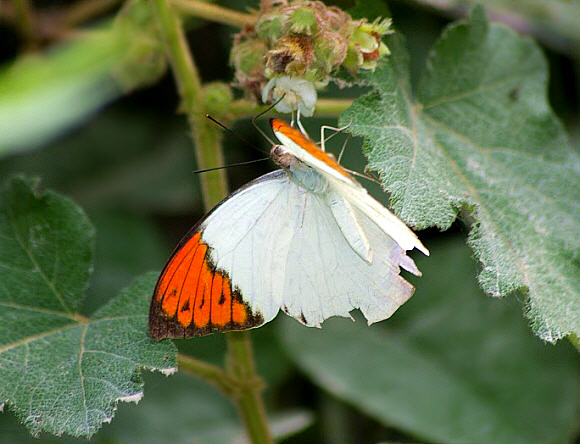
Introduction
The genus Hebomoia comprises of just 2 species, which despite similarities in appearance are only distantly related to the Colotis Orange tips of Africa.
Hebomoia glaucippe is distributed from India and Sri Lanka to China and Japan, and south across the Philippine islands to Sumatra, Borneo, Sulawesi, Java and Timor. It’s close relative leucippe is found east of the Wallace Line, on the Moluccas, Ambon, Serang and Buru.
Habitats
Hebomoia glaucippe is primarily a lowland and mid-elevation species, and is adapted to a very wide variety of habitats ranging from the arid scrubby grasslands of India to the tropical rainforests of Borneo. In temperate Asia it is mainly found in the warmer valleys.
Lifecycle
The larval foodplants include Crateva, Capparis and Cleome.
Adult behaviour
Males spend long periods resting on the ground, where their cryptic pale “dead-leaf” underside pattern affords them excellent camouflage. Periodically they take flight, patrolling back and forth in search of females. In warm overcast weather they will sometimes bask with wings half open on the ground or on foliage, but at all times remain very alert and difficult to approach.
Both sexes visit flowers frequently, preferring Lantana and other bushy plants. In common with other heavy species such as Swallowtails and Birdwings, the Great Orange-tip when feeding tends to keep it’s wings constantly fluttering to support it’s weight.
